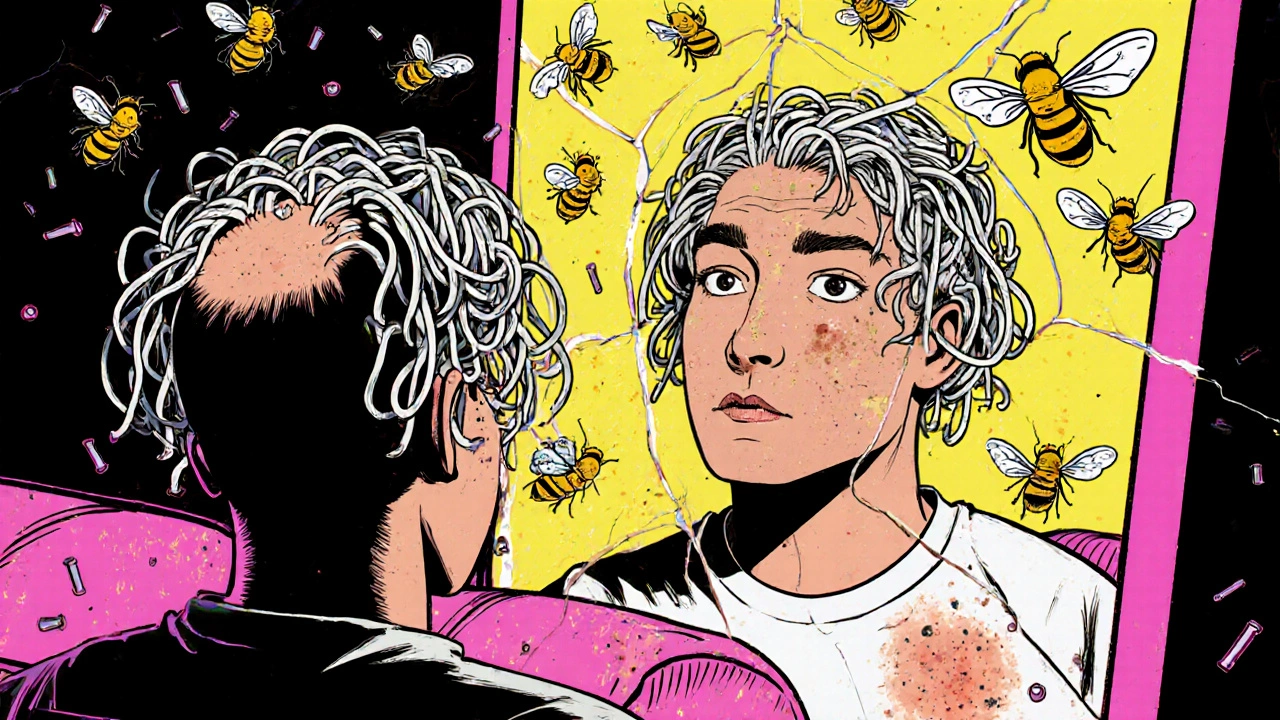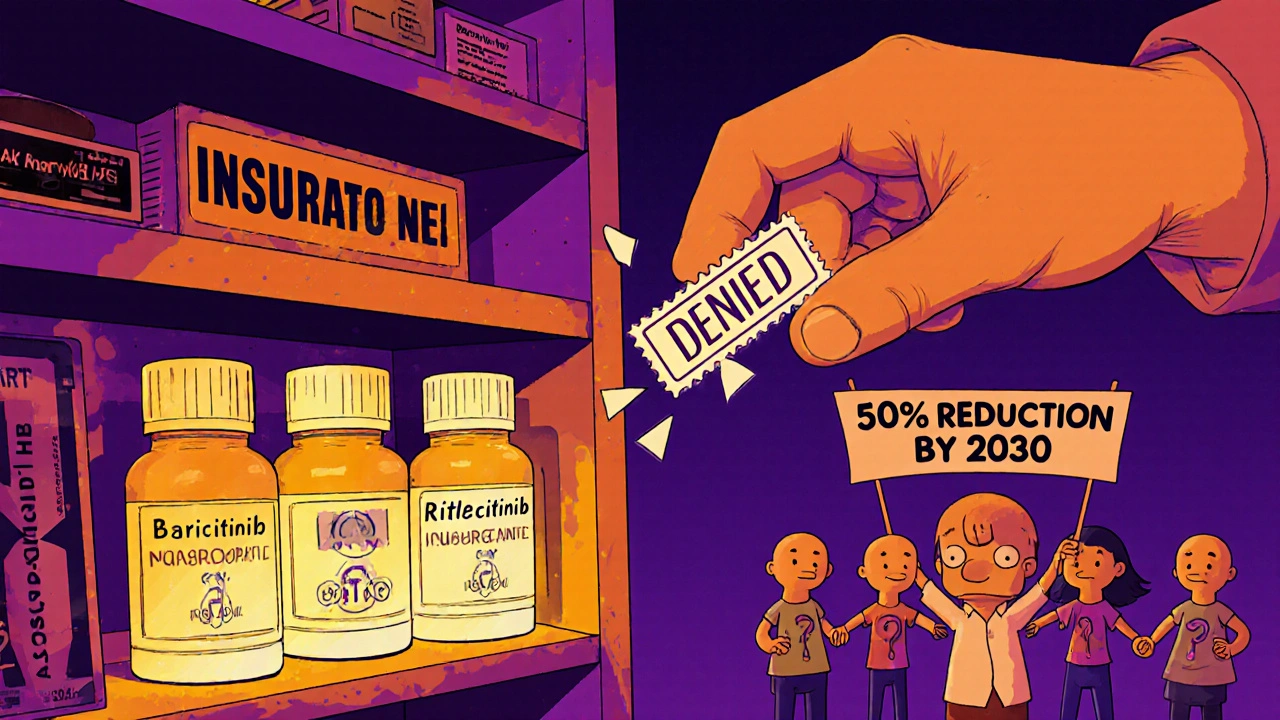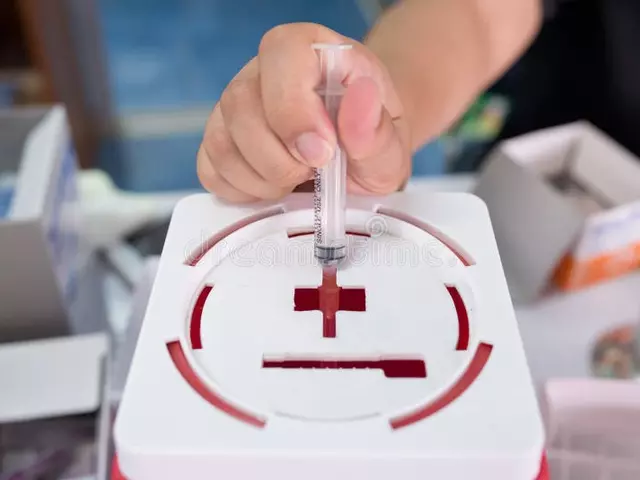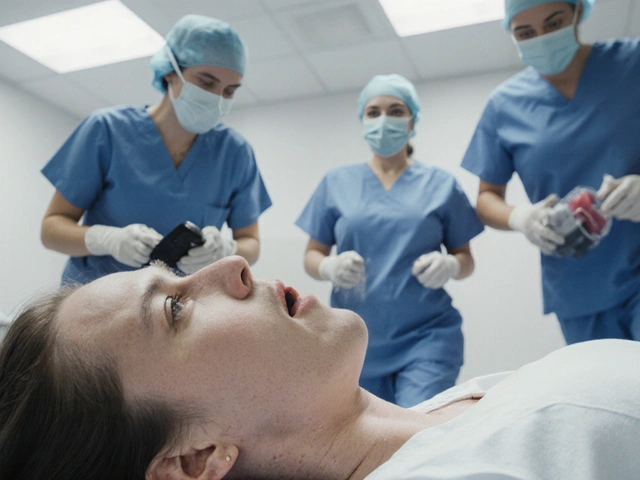Alopecia areata isn’t just about losing patches of hair. It’s your immune system turning on your own hair follicles-like a friendly fire incident inside your scalp. You wake up one day and notice a coin-sized bald spot. No itching, no scaling, no redness. Just smooth, silent skin where hair used to be. This isn’t aging. It’s not stress. It’s an autoimmune condition that catches most people off guard.
What Actually Happens in Your Scalp?
Your hair grows in cycles: active growth (anagen), transition (catagen), and rest (telogen). In alopecia areata, your immune system attacks follicles stuck in the anagen phase. Immune cells-mainly CD8+ T cells and natural killer cells-cluster around the base of the follicle like a swarm. They don’t destroy the follicle. They just shut it down. The follicle enters early catagen or telogen, and hair falls out. But here’s the key: the follicle stays alive. That’s why regrowth is possible, even after years of loss.
That’s different from androgenetic alopecia (male or female pattern baldness), where follicles shrink over time. Or telogen effluvium, where stress pushes a bunch of hairs into resting mode all at once. Alopecia areata is targeted. It’s specific. And it’s unpredictable.
The Different Faces of Alopecia Areata
This condition doesn’t look the same for everyone. The classic form is patchy hair loss-round, smooth bald spots on the scalp. But it can go further:
- Alopecia totalis: Complete loss of scalp hair.
- Alopecia universalis: Loss of all body hair, including eyebrows, eyelashes, armpits, and pubic hair.
- Ophiasis: Hair loss in a band around the sides and back of the head-often harder to treat.
- Diffuse alopecia areata: Sudden thinning across the whole scalp, mimicking general shedding.
- Alopecia barbae: Only the beard is affected, common in men.
Some people also notice changes in their nails. Tiny dents (pitting), ridges, or rough, sandpaper-like surfaces. About 1 in 3 people with alopecia areata have nail changes. It’s not just a cosmetic issue-it’s a clue your immune system is active.
Why Does This Happen?
The exact trigger is still unknown, but genetics play a big role. If you have a close relative with alopecia areata, your risk goes up. It’s also linked to other autoimmune diseases like thyroid disorders, vitiligo, or type 1 diabetes. About 20% of people report tingling, itching, or burning in the scalp weeks before hair falls out. That’s your immune system ramping up.
It’s not caused by poor hygiene, diet, or stress alone-but stress can make it worse. The immune system doesn’t care if you’re ‘strong’ or ‘calm.’ It just sees your hair follicles as a threat.

Can It Get Better on Its Own?
Yes. And that’s what makes this condition so confusing. About 80% of people with only a few small patches see regrowth within a year, even without treatment. Hair often comes back white or gray at first, then slowly regains its color. But if you lose more than half your scalp hair, or if it spreads to your whole head or body, spontaneous regrowth drops to under 10%.
Relapse is common. Even if your hair grows back, it can fall out again months or years later. That’s why it’s called a relapsing-remitting condition. It’s not linear. It’s messy.
Treatment Options: What Works and What Doesn’t
There’s no cure. But there are treatments that can help. And they’re not all equal.
Intralesional Corticosteroid Injections
This is the first-line treatment for patchy alopecia areata. A dermatologist injects a diluted steroid-usually triamcinolone acetonide-directly into the bald patches every 4 to 6 weeks. It suppresses the immune attack locally. Success rate? Around 60-67% for limited patches. It works fast-some see regrowth in 4 to 8 weeks. But it’s not for large areas. You can’t inject your whole scalp.
Topical Corticosteroids
Strong steroid lotions or foams (like 0.1% betamethasone valerate) applied daily. They’re safer than injections but slower. It takes 6 to 12 months to see results. Success rate? Only 25-30%. Good for mild cases or kids. But if you’ve lost half your hair, this won’t cut it.
Contact Immunotherapy (DPCP)
This one’s intense. You apply a chemical called diphenylcyclopropenone to your scalp weekly. It causes a controlled allergic reaction-redness, itching, flaking. The theory? Your immune system gets distracted by the rash and stops attacking the follicles. Success rate: 30-60%. But it takes 6 to 12 months. And the side effects? Itchy, burning skin. Not for the faint of heart.
JAK Inhibitors: The Game Changer
Since 2022, JAK inhibitors have changed the game. These are oral pills originally developed for rheumatoid arthritis. They block the immune signals that trigger hair loss.
- Baricitinib (Olumiant): FDA-approved in 2022. In trials, 35.6% of patients with severe alopecia areata regained 80% or more scalp hair in 36 weeks.
- Ritlecitinib: Approved in June 2023. In the ALLEGRO trial, nearly 30% of patients hit 80% regrowth in just 24 weeks.
These aren’t magic. They’re expensive-$10,000 to $15,000 a month. Insurance often denies coverage unless you’ve tried other treatments first. And you have to stay on them. Stop taking them? Hair falls out again in most cases-up to 75% relapse within a year.
Minoxidil: Not What You Think
Many people try Rogaine. It doesn’t work for alopecia areata. At best, it helps 0-15% of people with extensive loss. It doesn’t stop the immune attack. It just might slightly boost growth if the follicle is already trying to recover. Don’t waste your money expecting miracles.

The Emotional Toll
Alopecia areata doesn’t kill you. But it can break you.
Studies show 30% of patients have moderate to severe anxiety. 28% meet the criteria for clinical depression. 68% feel social anxiety. One in two avoids swimming, beaches, or public showers because they’re afraid people will stare. Kids get bullied. Adults lose jobs. Partners leave.
It’s not vanity. It’s identity. Hair is tied to how we see ourselves-and how others see us. The National Institutes of Health says alopecia areata has the highest quality-of-life burden of any skin disease-even worse than psoriasis.
What’s Next?
Research is moving fast. Scientists are now looking at genetic markers like ULBP3/6 genes to predict who will respond to which treatment. By 2025, doctors may use a simple blood test to tell you if baricitinib will work for you-before you start.
Combination therapies are being tested: JAK inhibitors + topical steroids + light therapy. Early results look promising. The goal isn’t just regrowth-it’s long-term remission.
The National Alopecia Areata Foundation projects a 50% reduction in disease burden by 2030. That means fewer people suffering in silence. Fewer people hiding under wigs. More people living without fear.
What Should You Do If You’re Losing Hair?
If you notice sudden, round bald patches:
- Don’t panic. It’s not cancer. It’s not contagious.
- See a dermatologist. Not your GP. A skin specialist who’s seen this before.
- Get your nails checked. Nail changes support the diagnosis.
- Ask about blood tests for thyroid or other autoimmune conditions.
- Don’t rush into expensive treatments without a plan.
- Join a support group. Talking to others who get it? That’s medicine too.
There’s no shame in needing help. No shame in wearing a wig. No shame in crying. This isn’t your fault. And you’re not alone.
Is alopecia areata caused by stress?
No, stress doesn’t cause alopecia areata. It’s an autoimmune condition driven by genetics and immune dysfunction. But stress can trigger flare-ups or make existing hair loss worse. It doesn’t start the disease, but it can make it harder to manage.
Can alopecia areata be cured?
There’s no permanent cure yet. Current treatments can stop the immune attack and trigger regrowth, but they don’t fix the underlying immune dysfunction. Most people need ongoing treatment. Stopping medication often leads to relapse. Research is focused on long-term remission, not just temporary regrowth.
Do JAK inhibitors work for everyone?
No. In clinical trials, about 35-40% of patients with severe alopecia areata achieved 80% or more scalp regrowth with JAK inhibitors like baricitinib or ritlecitinib. That means 60-65% don’t respond well. Response varies by age, extent of hair loss, and genetics. Not everyone is a candidate, and not everyone benefits.
Is alopecia areata more common in women?
It affects men and women equally. But women tend to experience more severe forms and greater emotional impact. Studies show higher rates of anxiety and depression in women with alopecia areata, possibly due to societal pressures around appearance. The condition starts before age 40 in half of all cases, regardless of gender.
Will my hair grow back the same color?
Often, regrowth starts as white or gray hair. That’s because the pigment-producing cells (melanocytes) are temporarily affected by the immune attack. Over time, in many cases, the color slowly returns. But not always. Some people keep gray or white patches permanently, even after full regrowth.
Are natural remedies like essential oils effective?
There’s no solid scientific evidence that essential oils, acupuncture, or supplements cure or significantly improve alopecia areata. Some people report feeling better using them, but that’s likely due to reduced stress-not actual regrowth. Don’t waste money on unproven treatments. Focus on evidence-based options under a dermatologist’s care.




Malia Blom
November 7, 2025 AT 22:26Okay but let’s be real - if your immune system is this bad at distinguishing friends from foes, maybe we should just let it figure itself out? Hair grows back. People don’t. I’ve seen guys with full beards lose half their scalp and still out-hustle everyone at the office. This isn’t a tragedy. It’s biology being messy. And honestly? The fact that we’re spending $15K/month on pills to fix something that 80% of people recover from naturally… that’s capitalism for you.
Erika Puhan
November 9, 2025 AT 05:49While the immunological mechanisms are indeed fascinating, the therapeutic landscape remains critically under-optimized. The reliance on JAK inhibitors, despite their high cost and transient efficacy, reflects a systemic failure in translational immunology. We are treating symptoms, not root pathophysiology - specifically, the dysregulation of ULBP3/6 ligand expression in follicular stem cell niches. Until we achieve targeted epigenetic modulation, we’re merely bandaging a wound with a platinum-plated gauze.
Edward Weaver
November 10, 2025 AT 04:57Look, I don’t care what your genetics say - if you’re losing your hair, you’re not taking care of yourself. I served in the Army. We didn’t whine about bald spots. We shaved it all off and moved on. These new drugs? They’re for people who can’t handle real life. And don’t get me started on the ‘emotional toll’ nonsense. You think soldiers in Iraq cared if they lost eyebrows? Get tough. America doesn’t need more fragile people.
Lexi Brinkley
November 10, 2025 AT 18:57ok but like… i just got diagnosed and i’m crying rn 😭 i wore a wig to my cousin’s wedding and everyone thought it was a ‘style choice’ 🤷♀️ i’m so tired of pretending it’s not a big deal. also baricitinib is $12k/month and my insurance said no 😩 but i’m trying dpcp now and it burns like hell but at least my sideburns are coming back?? 🥲
Kelsey Veg
November 11, 2025 AT 22:00so i went to this derm and she was like ‘oh u have alopecia’ and i was like ‘wait u mean i’m not just stressed??’ like i’ve been doing yoga and eating kale and still lost half my hair 😭 turns out my nails are pitted too?? who knew?? also minoxidil is a scam i wasted 3 months on it. jaks are expensive but at least they work? maybe??
Alex Harrison
November 12, 2025 AT 05:26I’ve been dealing with this since college. Patchy at first, then totalis for two years. Regrew everything after 3 years - white at first, now it’s mostly dark again. I didn’t take any meds. Just waited. People say ‘it’s not life-threatening’ but they don’t get it. You look in the mirror and don’t recognize yourself. I’m not mad at the science - I’m just glad someone finally published real data. JAK inhibitors saved my job interview. I wore a wig for 5 years. Now I don’t. Just… thank you for writing this.
Jay Wallace
November 13, 2025 AT 04:25Let’s not romanticize this… the NIH’s ‘50% reduction by 2030’ is a PR stunt. We’re talking about a condition that affects 2% of the population - and yet we’re treating it like a national emergency. Meanwhile, real diseases like Lyme and long-COVID are ignored. JAK inhibitors? A billion-dollar cash grab by Big Pharma. And don’t get me started on ‘support groups’ - it’s not therapy, it’s performance. People need to grow up and stop turning every biological hiccup into a trauma narrative.
Alyssa Fisher
November 14, 2025 AT 23:06There’s something deeply human about this condition - it’s not just about hair. It’s about the body betraying you without warning, without explanation. We treat it like a cosmetic issue because we’re uncomfortable with invisible illness. But when your immune system decides your follicles are enemies, you’re not just losing hair - you’re losing trust in your own body. And the fact that regrowth can come back gray? That’s poetic, in a tragic way. Like your soul remembers what color your hair used to be, but your body forgot. Maybe the real cure isn’t in pills - it’s in learning to accept the version of yourself that doesn’t look like the one you were promised.
Alyssa Salazar
November 15, 2025 AT 14:07Okay but the ULBP3/6 genetic markers? That’s the future. We’re talking precision immunology here - we’re not just guessing which JAK inhibitor to use, we’re matching the patient’s immune signature to the drug. And the fact that nail pitting is a biomarker? Genius. I’ve been pushing my clinic to run the panel for every patient with patchy loss. Most docs still think it’s ‘stress’ or ‘vitamin deficiency.’ We’re decades behind. Also - yes, JAK inhibitors don’t work for everyone, but if you’re 30% of the responders? You’re getting your life back. Stop comparing yourself to the 70%. This isn’t a race. It’s a biology revolution.